Today, small and medium-sized enterprises (SMEs) face relentless pressure to boost efficiency, eliminate manual errors, and scale operations amid limited resources. The right workflow management software transforms chaotic, email-driven processes into streamlined, automated systems—freeing teams to focus on high-impact work.
What is a Workflow Management Software?
Workflow Management Software (WMS) is a digital tool designed to streamline, automate, and track the sequence of tasks, information, and approvals that make up a business process. For small and medium-sized enterprises (SMEs), it replaces manual, paper-based, or email-driven methods with a centralized, structured system.
Application Scenarios For Workflow Management Software for SMEs
Process Standardization: It clearly defines how routine work (like invoice approval, employee onboarding, customer support ticket handling, or sales lead processing) should be done. This ensures consistency and reduces errors caused by ad-hoc methods or unclear responsibilities.
Task Automation: The software automatically routes tasks or documents to the right person at the right stage. For example, it can send an invoice for manager approval once the data is entered, notify the finance team once approved, and automatically flag overdue payments – eliminating the need for manual chasing via email or spreadsheets.
Visibility & Tracking: Managers and team members gain real-time insight into where any specific piece of work (e.g., a purchase order, a vacation request, a customer order) stands within the process. They can instantly see who is responsible for the current task, how long it’s been there, and if deadlines are at risk.
Improved Collaboration & Accountability: By clearly assigning tasks and notifications within the system, everyone knows their responsibilities. It reduces confusion about ownership (“Whose turn is it?”) and provides an audit trail of actions taken and decisions made.
Efficiency & Time Savings: Automating handoffs, reminders, and simple tasks (like data entry between systems) significantly reduces delays and manual effort. This frees up valuable employee time for higher-value activities and allows SMEs to handle more work without adding staff.
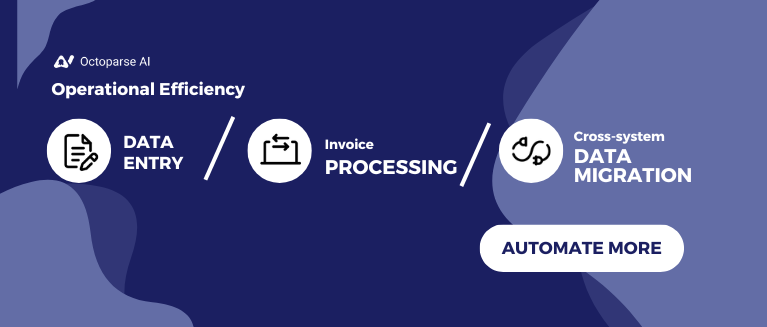
Reduced Errors & Bottlenecks: Standardized workflows minimize mistakes from manual handling or missed steps. The software also highlights bottlenecks (e.g., tasks consistently piling up at one person’s desk), allowing managers to address process inefficiencies proactively.
Scalability: As an SME grows, its processes become more complex. WMS provides a structured framework that makes it easier to manage increased volume and complexity without chaos, ensuring processes remain efficient and controlled.
20 Best Workflow Management Software Solutions
There are specialized automation tools for each step to handle repetitive and simple tasks. Here are 20 recommended workflow management tools, divided into four categories: All-in-One Workflow Platforms, Specialized & Vertical Solutions, AI-Native & Automation-First Tools and Developer & Open-Source Tools.
The following matrix shows the learning difficulty and price of each recommended tool in each category.
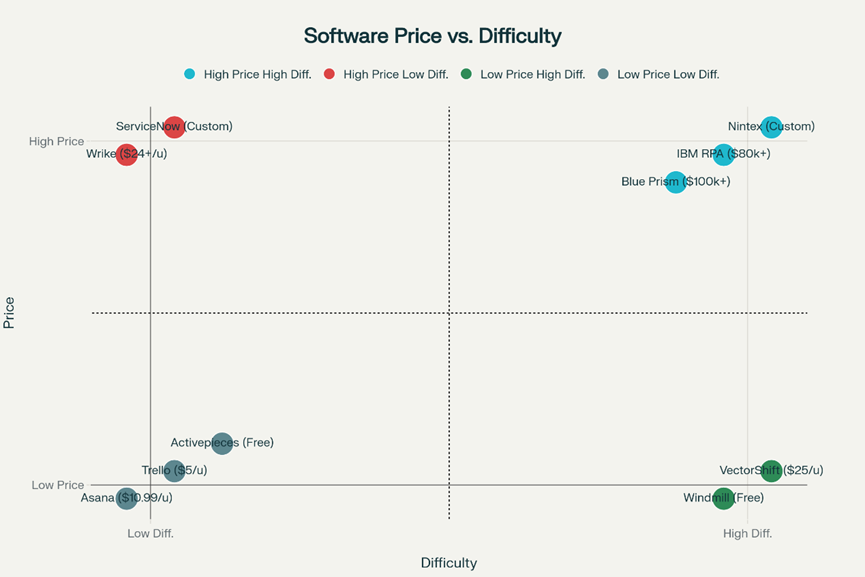
All-in-One Workflow Platforms
1. Monday.com
A visual work OS enabling teams to build custom workflows via drag-and-drop boards, automations, and 200+ templates. Optimized for marketing, project tracking, and cross-functional operations

Pros:
- AI-Powered Automation: Generates workflows via natural language prompts (Manage IT support tickets), reducing setup time.
- Template Ecosystem: 200+ industry-specific templates accelerate onboarding for sales, HR, and agile teams.
- Real-Time Collaboration: Integrated docs, timelines, and maps streamline communication, cutting status meetings.
Cons: Limited multi-phase logic, export restrictions
Learning Difficulty: 2/5 ⭐️⭐️
- Complex Workflow Limitations: Struggles with multi-phase, conditional logic (dynamic approval chains) compared to developer-centric tools like n8n
- Pricing Scalability: Advanced features (e.g., time tracking, formula columns) require Pro plan ($19/user/month), raising costs for large teams
Price Tier: 💰💰 Mid-Range
2. Octoparse AI
Octoparse AI is a no-code, drag-and-drop RPA workflow management solution designed to automate repetitive business tasks. It integrates AI agents with robotic process automation (RPA) technology, enabling end-to-end automation from data collection and cleansing to cross-system integration with specialized capabilities for resolving fragmented operations in marketing, data management, and beyond.
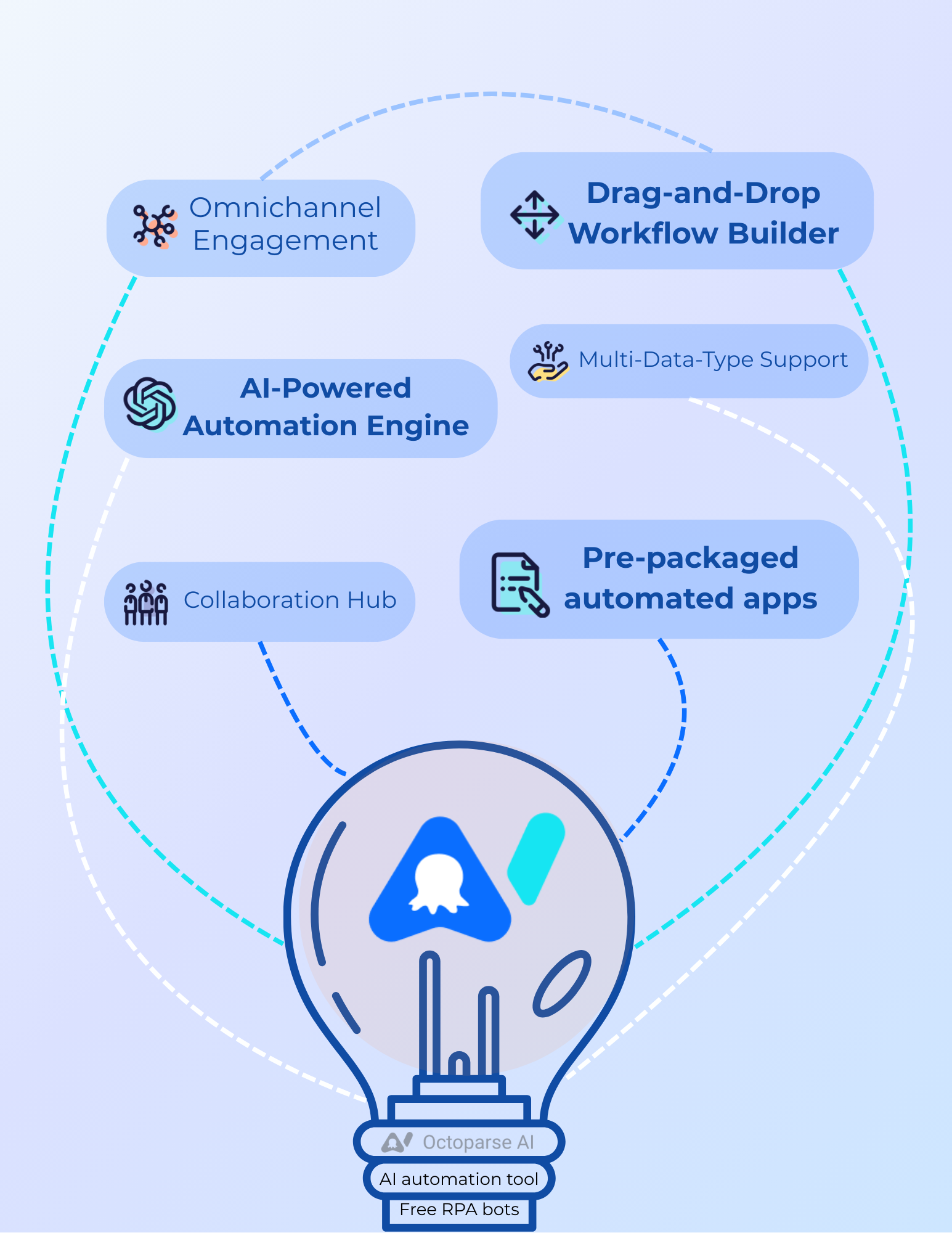
Key Features & Technical Advantages (Pros)
Visual Workflow Builder
- Intuitive Drag-and-Drop Interface: Users construct complex workflows by connecting operational nodes (web interactions, data extraction, API calls) without coding.
- Multi-Data-Type Support: Seamlessly handles web scraping, file processing (PDF/Excel), desktop application automation, and database synchronization across heterogeneous data sources.
AI-Powered Automation Engine
- Intelligent Decision-Making: Leverages integrated LLMs (OpenAI GPT-4, Anthropic Claude) for data analysis (sentiment classification), personalized content generation, and marketing optimization.
- Self-Healing Error Handling: Automatically detects and resolves workflow disruptions via retry protocols or alert triggers, enhancing system robustness.
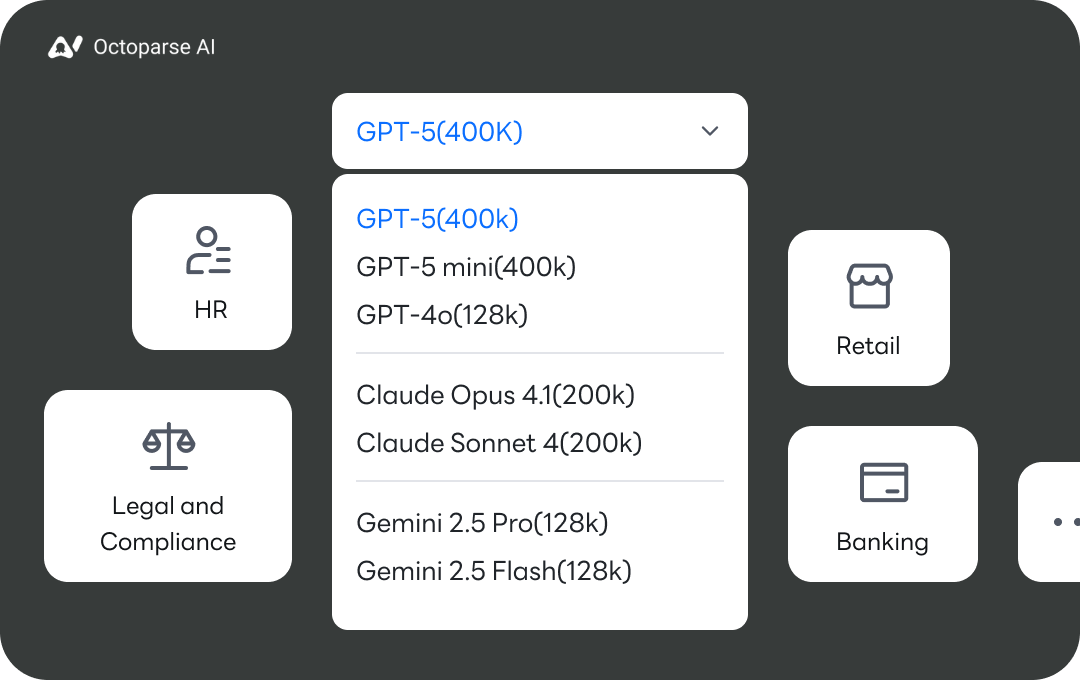
End-to-End Marketing Automation
- Omnichannel Engagement: Automates lead capture from platforms (LinkedIn/TikTok), CRM integration (like Salesforce), and multichannel campaign execution.
- Dynamic Response Systems: Monitors real-time variables (competitor pricing/social sentiment) to trigger automated adjustments (promotional alerts/bid strategies).
Pre-built automation apps
- Pre-packaged automated apps that require no learning curve to set up, ready to use out of the box, and provide a quick, cost-free experience of automation.
- Multi-industry, multi-functional automation scenarios covered, with apps adjustable to custom requirements—simply input parameters to get started.
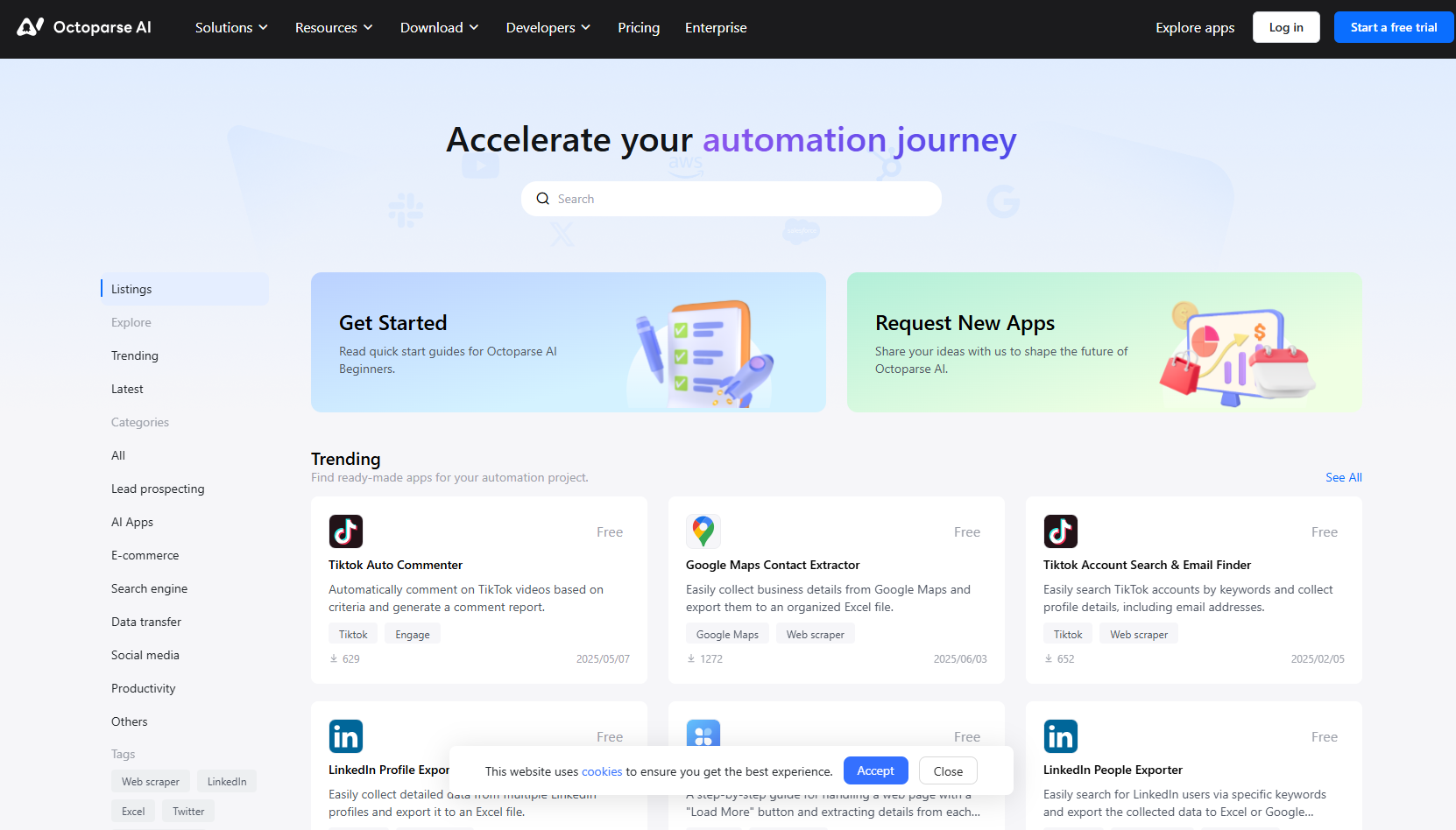
Enterprise-Grade Integration
- Collaboration Hub supports team workspaces, version control, and role-based permissions for scalable departmental deployment.
Cons: No API integrations
Learning Difficulty: 1/5 ⭐️
Price Tier: 💰 Budget (self-hosted) Learn more pricing details>>
Free Tier: Unlimited workflow testing for individual users
Starter Plan($29/month): 1 bot + webhook
Team Plan ($49/month): 3 bots + 4 organization seats + 1-on-1 training
Why Octoparse AI?
It combines AI and RPA within an intuitive drag-and-drop framework, enabling SMEs to rapidly deploy scalable automations particularly in data-centric and marketing workflows while democratizing advanced technology through zero-code accessibility.
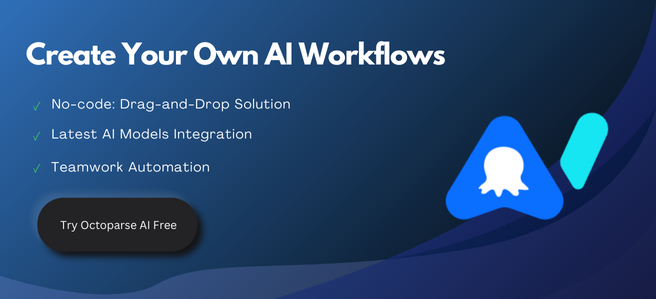
3. ClickUp
Unified platform for tasks, docs, and goals with nested subtasks, custom statuses, and goal-tracking automation. Targets product teams and agile workflows.
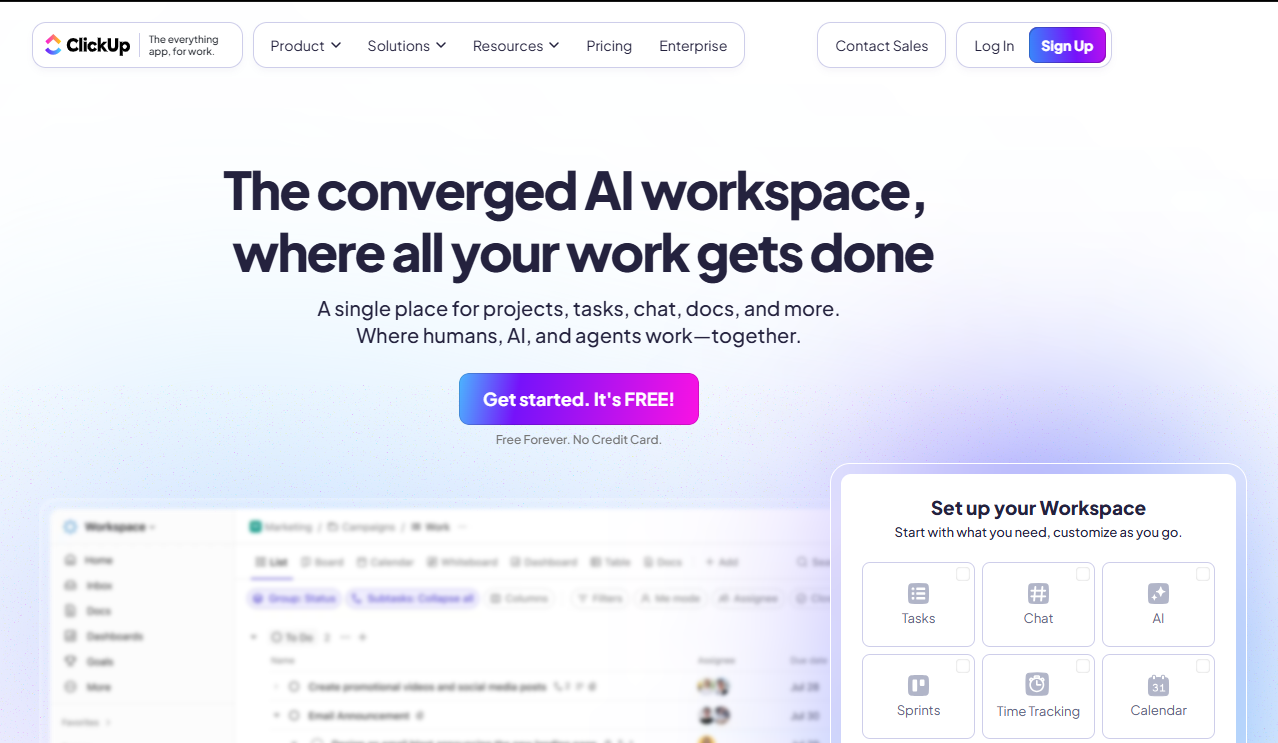
Pros:
- Dynamic Task Routing: Auto-assigns tasks based on workload capacity, preventing bottlenecks
- All-in-One Suite: Integrates chat, wikis, and proofing, eliminating 3+ tools for users
- Free Plan Viability: Unlimited tasks/docs support small teams without cost.
Cons:
- Automation Delays: Users report 5-10 minute lags in trigger execution during peak loads
- Feature Overload: 50+ modules (Whiteboards, Mind Maps) increase onboarding time
Learning Difficulty: 3/5 ⭐️⭐️⭐️
Price Tier: 💰 Budget
4. Smartsheet
Spreadsheet-like interface with Gantt charts, resource management, and approval automation. Targets Excel-reliant teams.
Pros:
- Formula Automation: Replicates Excel logic (e.g., VLOOKUP) for finance/ops teams.
- Govt/Compliance Use: FedRAMP-certified for public sector workflows
Cons:
- Visual Limitations: Weak kanban/calendar views vs. monday.com
- Static Dashboards: No real-time data sync without manual refresh
Learning Difficulty: 2.5/5 ⭐️⭐️💫
Price Tier: 💰💰 Mid-Range
5. Airtable
Hybrid database/workflow tool. Grid + calendar views for creative teams
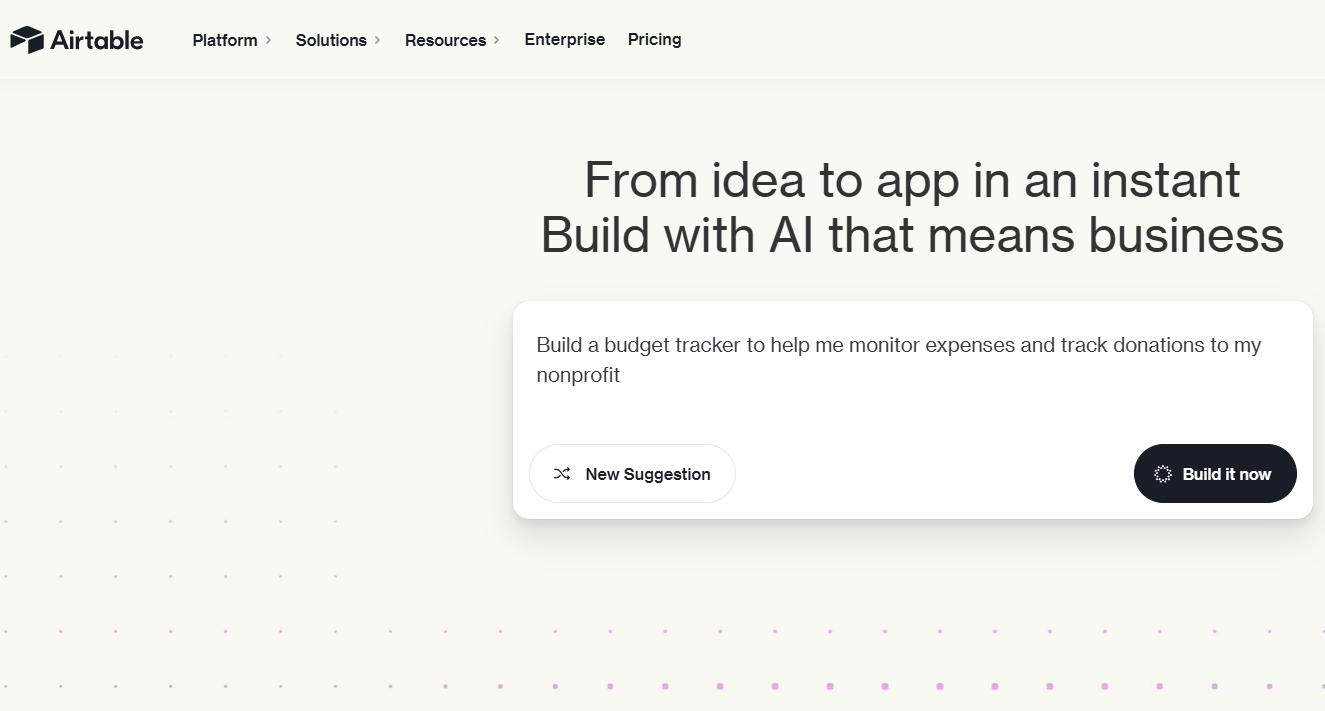
Pros: Flexible data modeling, Google Workspace sync
Cons: Steep pricing jump for advanced features
Learning Difficulty: 3/5 ⭐️⭐️⭐️
Price Tier: 💰💰💰 Premium
6. Wrike
Enterprise-grade tool for complex workflows with AI-driven analytics, custom request forms, and proofing/approval cycles. Ideal for regulated industries and client-facing teams.
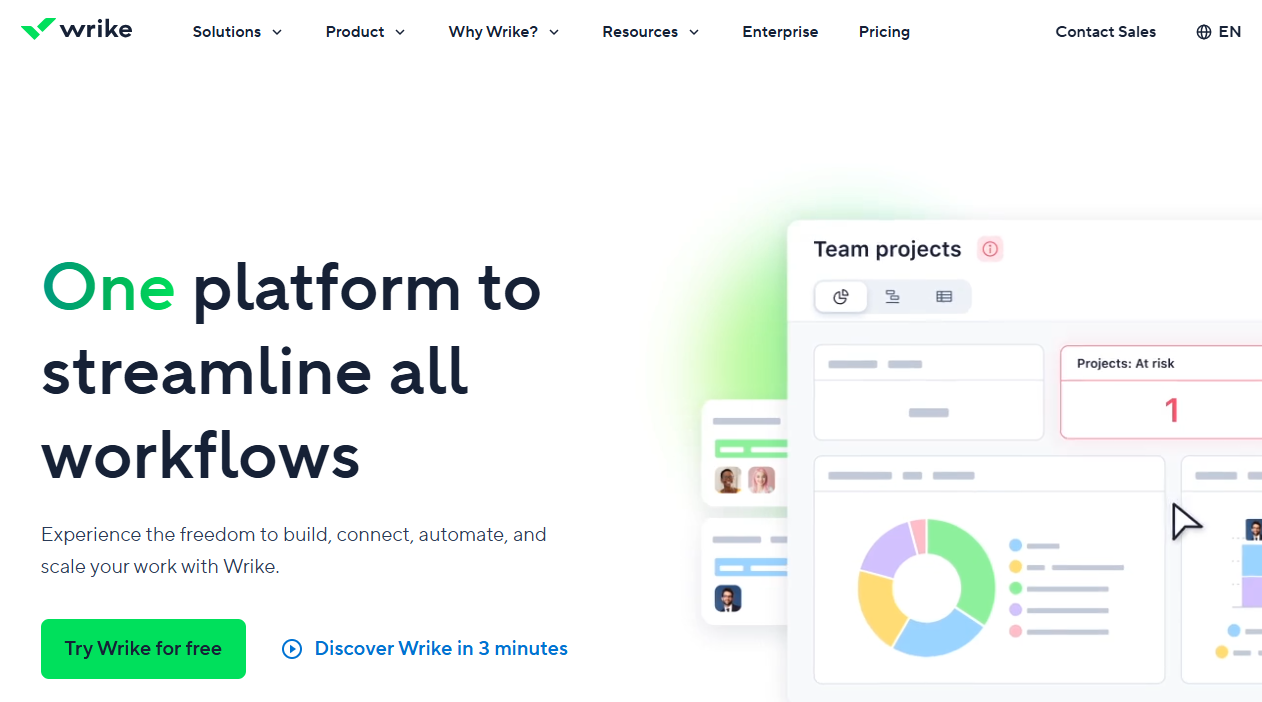
Pros:
- AI Risk Prediction: Flags deadline risks 14 days in advance using historical data
- Audit Trails: Version history and compliance logs meet GDPR/HIPAA standards.
- Resource Forecasting: Workload charts prevent overallocation
Cons:
- Steep Initial Setup: Custom field configuration takes 2-3 weeks for enterprise deployments
- Mobile Gaps: Limited automation editing on iOS/Android apps
Learning Difficulty: 4/5 ⭐️⭐️⭐️⭐️
Price Tier: 💰💰💰 Premium
Supplemental Tools
Teamwork.com: Client-focused PM with workload planning & time tracking. Best for agencies managing billable hours
Quire: Nested task lists + dashboard. Ideal for lightweight team coordination
Specialized & Vertical Solutions
7. Jira(Atlassian)
Agile-focused workflow engine for dev teams, featuring scrum/kanban boards, CI/CD integrations, and bug-tracking automation

Pros:
- DevOps Automation: Auto-transitions tickets between “Development” →”Testing”
- Extensible Marketplace: 3,000+ plugins (ScriptRunner for custom scripts)
Cons:
- Non-Tech User Barrier: Agile terminology confuses business teams
- Pricing Complexity: $13.53/user/month minimum for automation, plus plugin costs
Learning Difficulty: 4/5 ⭐️⭐️⭐️⭐️
Price Tier: 💰💰 Mid-Range
8. Bynder
Digital asset workflows for marketers. Integrates with Adobe CC/Slack.
Pros: Clean UI, metadata tagging, approval chains
Cons: Lacks project scheduling tools
Learning Difficulty: 2/5 ⭐️⭐️
Price Tier: 💰💰💰 Premium
9. Kissflow
No-code platform for HR/ops teams building employee onboarding, PO approvals, and help desks.
Pros:
- Google Workspace Sync: Auto-populates forms from Sheets/Docs.
- Process Analytics: Identifies bottlenecks
Cons:
- Rigid UI: Customization requires CSS/HTML skills.
- Mobile App Gaps: Cannot edit workflows on iOS/Android
Learning Difficulty: 2/5 ⭐️⭐️
Price Tier: 💰💰 Mid-Range
10. Fluix
Field service workflows. Smart forms for contractors
Pros: Offline mode, automated PDF routing
Cons: Narrow industry use case
Learning Difficulty: 2.5/5 ⭐️⭐️💫
Price Tier: 💰💰 Mid-Range
11. Admation
Marketing approval workflows. Manages creative briefs/assets
Pros: Streamlined creative reviews, resource scheduling
Cons: Limited third-party integrations
Learning Difficulty: 3/5 ⭐️⭐️⭐️
Price Tier: 💰💰💰 Premium
Supplemental Tools:
Backlog: Combines Git + issue tracking. Built-in SVN for dev teams
Zenkit: Switches between Kanban/calendar/mind-map views. Flexible for hybrid teams
AI-Native & Automation-First Tools
12. Lindy
Creates autonomous AI agents (email triage, meeting prep)
Pros: Natural language setup, multi-tool agents
Cons: Advanced agents require tuning
Learning Difficulty: 2.5/5 ⭐️⭐️💫
Price Tier: 💰💰 Mid-Range
13. Pipefy
Low-code process automation. Dashboard + email triggers
Pros: Customizable cards, ERP integrations
Cons: Limited reporting, steep enterprise pricing
Learning Difficulty: 3/5 ⭐️⭐️⭐️
Price Tier: 💰💰💰 Premium
14. Relevance AI
Orchestrates AI agent chains (LinkedIn scraping → email gen)
Pros: Open-ended agent design, custom LLM support
Cons: Steep conceptual learning curve
Learning Difficulty: 4/5 ⭐️⭐️⭐️⭐️
Price Tier: 💰 Budget
15. VectorShift
Developer-centric AI pipelines. Integrates OpenAI/Anthropic models
Pros: Python SDK, multi-LLM support, voice bots
Cons: Non-technical users struggle with jargon
Learning Difficulty: 4.5/5 ⭐️⭐️⭐️⭐️💫
Price Tier: 💰💰 Mid-Range
Supplemental Tools:
Relay: Modern Zapier alternative with AI blocks (DALL·E, transcription)
Gumloop: Browser automation via Chrome extension. Subflows for complex logic
Developer & Open-Source Tools
16. Zapier
Cloud-based integrator linking 6,000+ apps via “Zaps.” Ideal for SMBs automating sales/marketing stacks
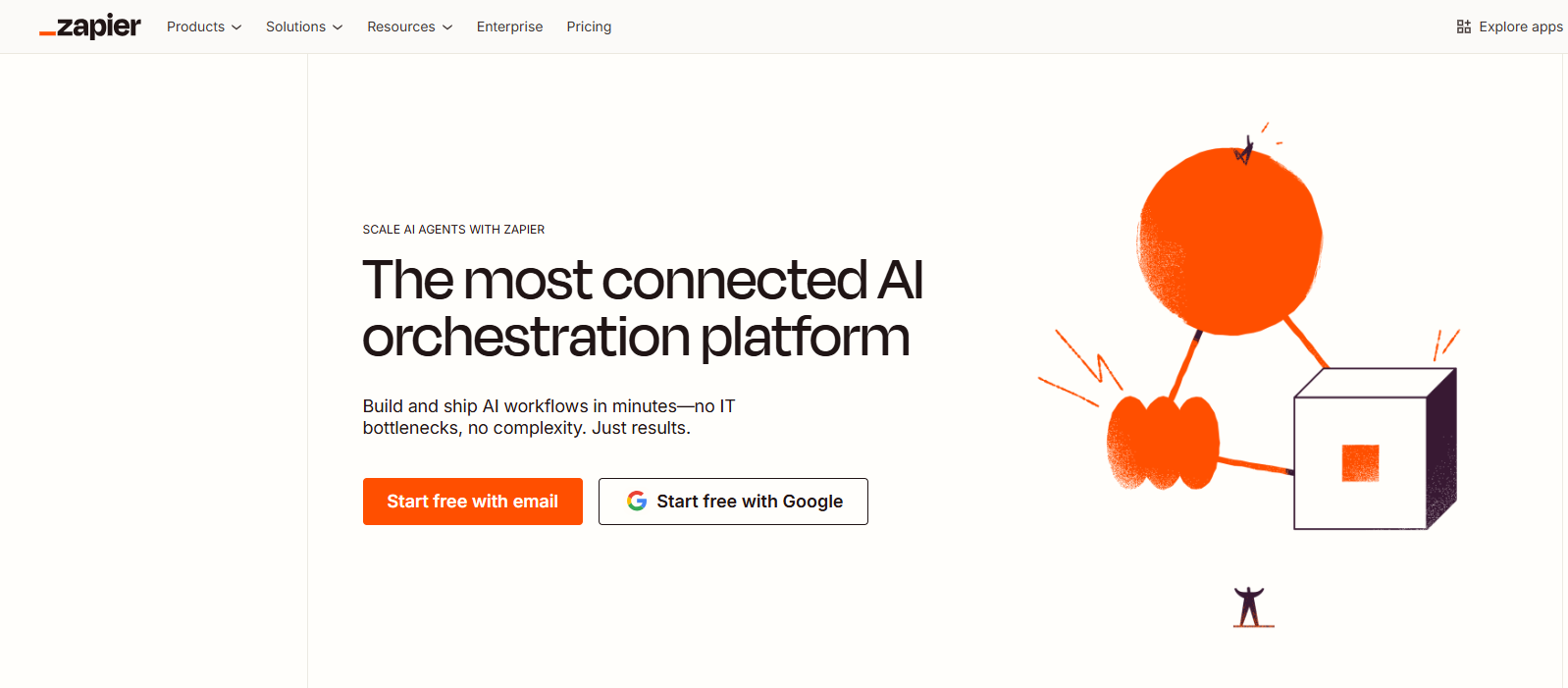
Pros:
- Largest App Library: 3X more integrations than competitors.
- Instant Triggers: 90% of Zaps execute in <2 minutes
Cons:
- Data Privacy Risks: Cloud-only model excludes on-prem systems
- Costly at Scale: $69/month for 100K tasks, unsuitable for high-volume workflows
Learning Difficulty: 2/5 ⭐️⭐️
Price Tier: 💰💰💰 Premium
17. n8n.io
Open-source, self-hostable platform with 400+ connectors and JavaScript/Python support for custom logic. Built for IT/ops teams handling sensitive data.
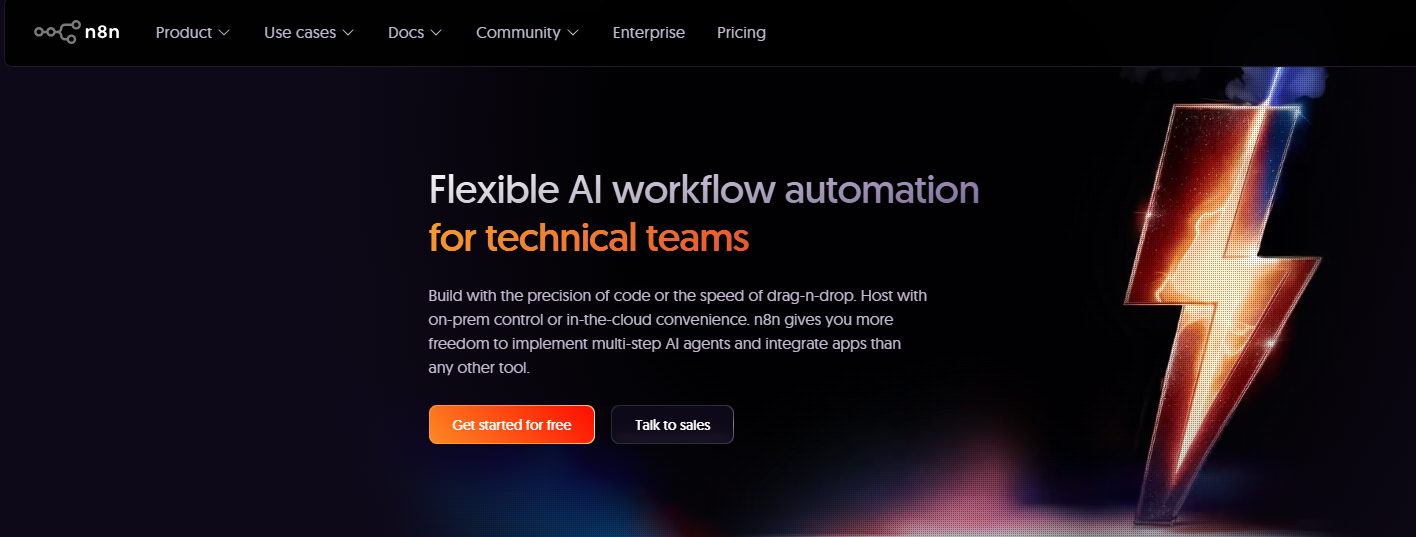
Pros:
- Code Injection: Merge no-code steps with Python scripts for complex ETL pipelines
- Zero Vendor Lock-in: Free self-hosting vs. cloud ($20/user/month).
Cons:
- Infrastructure Dependency: Requires Kubernetes/Docker knowledge for scaling
- Minimal Pre-Builds: Only 15% of automations have templates vs. 70% Zapier
Learning Difficulty: 4.5/5 ⭐️⭐️⭐️⭐️💫
Price Tier: 💰 Budget (self-hosted)
18. Windmill
Script-based workflows (Python/TS). Auto-generates UIs from code
Pros: Fast execution, Kubernetes-native
Cons: Requires scripting knowledge
Learning Difficulty: 4.5/5 ⭐️⭐️⭐️⭐️💫
Price Tier: 💰 Budget (self-hosted)
19. ProcessMaker
Low-code BPM suite. Focuses on compliance-heavy industries
Pros: Audit trails, RBAC, on-premise deployment
Cons: Complex for simple workflows
Learning Difficulty: 3.5/5 ⭐️⭐️⭐️💫
Price Tier: 💰💰💰 Premium
20. Activepieces
Open-source Zapier alternative. MIT-licensed with AI triggers
Pros: Self-hostable, community connectors
Cons: Young project (limited enterprise support)
Learning Difficulty: 3/5 ⭐️⭐️⭐️
Price Tier: 💰 Budget (self-hosted)
Supplemental Tools:
Node-RED: IoT/event-driven workflow builder. 5,000+ nodes for hardware integration
Wrap-up
As AI technology becomes more widespread, AI can provide better assistance to various workflow processes under specific training models, thereby saving resources. As a result, an increasing number of workflow management tools are beginning to integrate AI capabilities into their products.
Of course, this varies from person to person, but there is no doubt that Octoparse AI, as a low-cost, easy-to-learn automation tool, has become the new trend in tool selection. If you’re unsure where to start, give Octoparse AI a try.